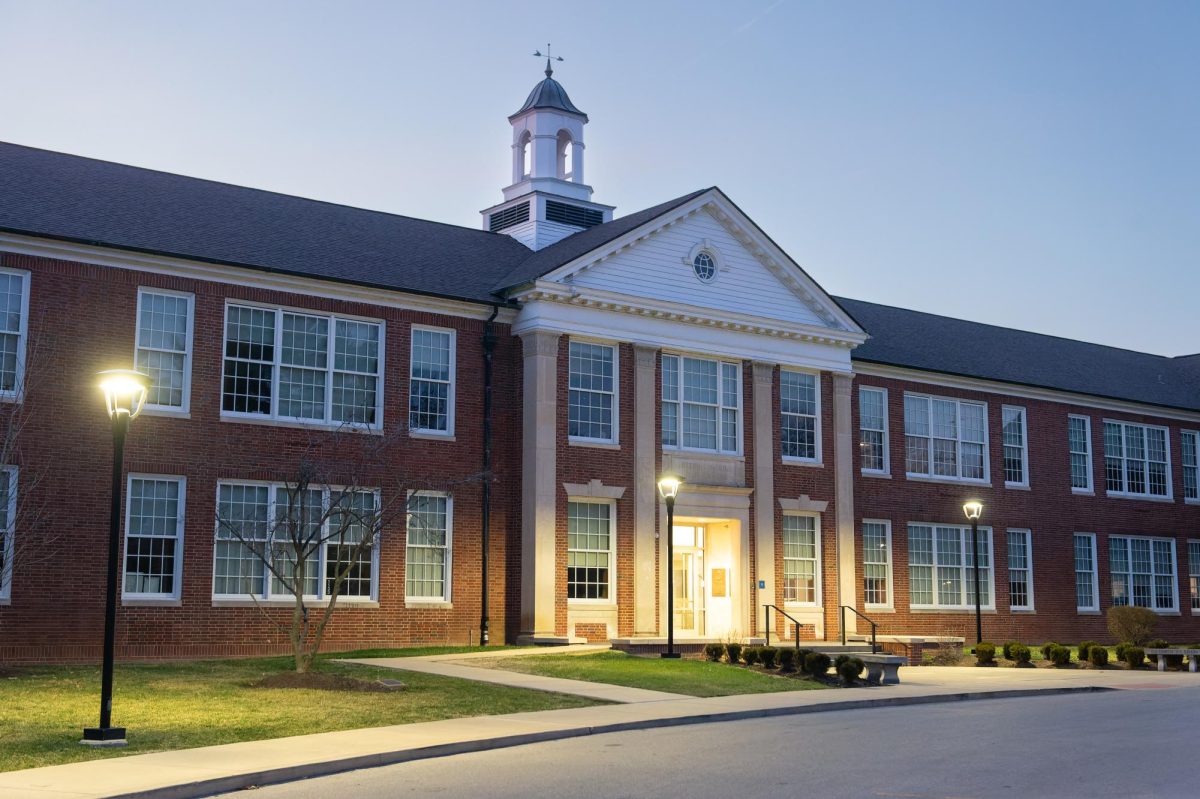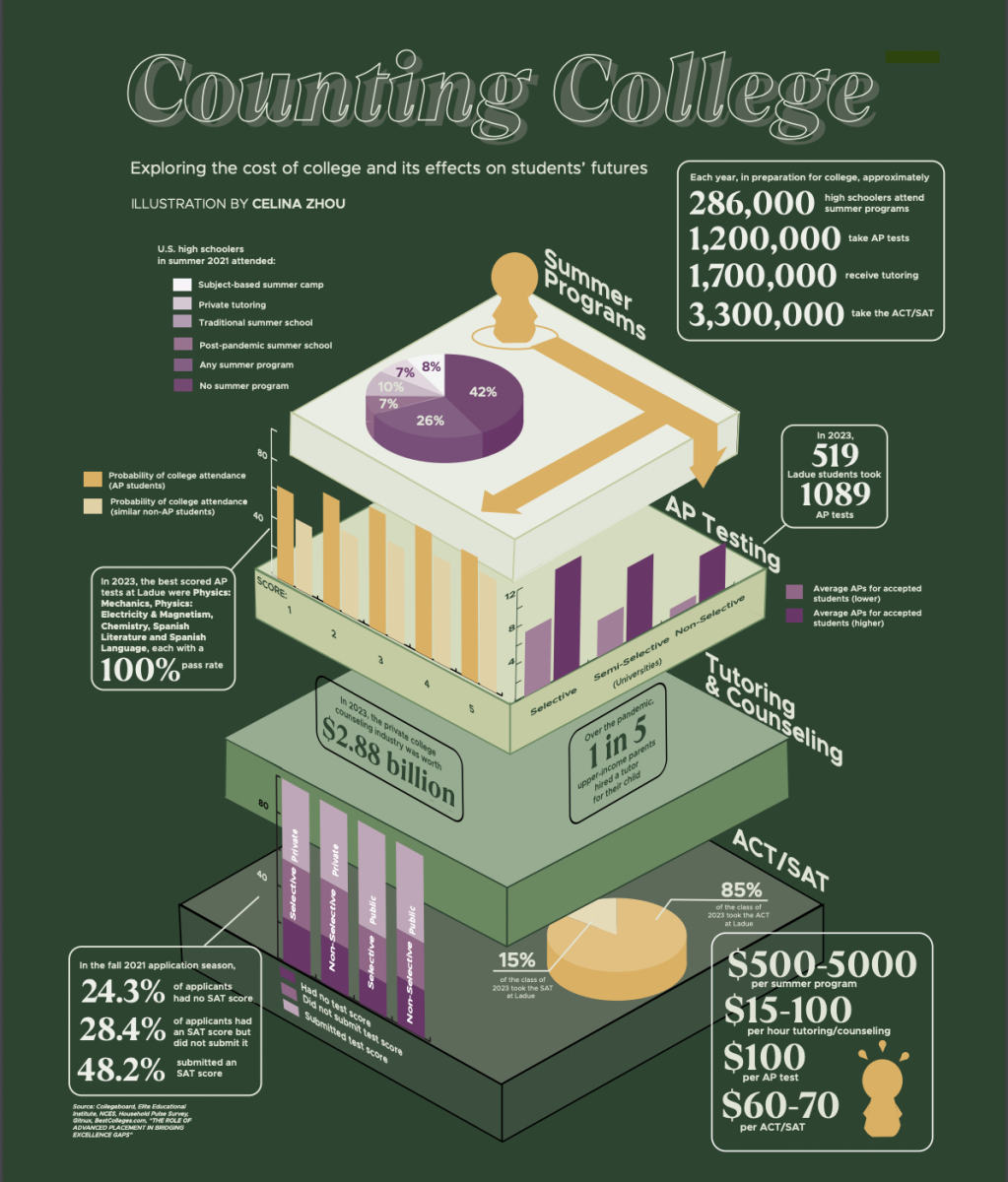Segregation, racial quotas and a controversial landmark Supreme Court decision — that is the complex history of affirmative action policies in academia. For decades, these policies have been utilized as a driving force in diversifying college communities and as a tool for leveling the playing field for students of all backgrounds. But not everyone was satisfied with them, and these grievances were eventually taken to the highest level of justice in the U.S. — a decision that would change the face of college admissions across the country.
History
Affirmative action was established in 1961 with the goal of giving minority groups equal opportunity when applying to college by mandating that universities take racial background into account. Ladue College & Career Counselor Diana Redden recognizes how these policies have decreased racial inequity.
“It helped to right a wrong in history, where students from minority backgrounds were not permitted to apply to college,” Redden said.
Advanced Expository Writing teacher Cheryl Ogolin believes that affirmative action introduced nuance.
“The natural inequities of the way in which our country is set up will always yield unfair results,” Ogolin said. “There’s always going to be people who would benefit from affirmative action. There will always be people who are going to benefit from their life circumstances, whether it’s their socioeconomic class, their parents’ connections or their own networking.”
Affirmative action resulted in racial variety among schools, but it upset those who perceived it as a flawed system.
“Historically, states that banned affirmative action in college admissions have seen a decrease in enrollment of minority students,” Ladue College & Career Counselor Chad Sisk said. “Over time, the numbers of minority students have increased, but not in line with the growth in minority populations.”
In 2014, Students For Fair Admissions sued Harvard University and the University of North Carolina in court in an attempt to eliminate affirmative action. In June 2023, the Supreme Court ruled to prohibit colleges from implementing it into their admissions process. Some predict that this decision will result in a decrease of minority enrollment and diversity on campus.
“I think that we have lost some specificity and some nuance in our understanding of how students live their lives,” Washington University (WashU) Executive Director of Undergraduate Admissions Grace James said. “And it’s disappointing to me to have lost some of that nuance.”
Admissions Process
As universities may no longer ask specifically about race, many are altering the structure of their admissions process. Essay prompts, in particular, are a target for these changes. For example, Sarah Lawrence University has a new prompt asking students directly about how the Supreme Court decision affects them.
“Several colleges are asking questions that are trying to get more at ‘life experiences,’” Sisk said. “Colleges want to know about your lived experiences and how that may impact you.”
Some colleges are adding these prompts as supplemental essays. WashU, for example, added the supplemental essay prompt: “Tell us how your identity has impacted the way you view or interact with your community,” among other related prompts.
“We added some optional short answer essay questions that have not previously been part of our application,” James said. “[It] gives students space to [talk about identity]. I thought it was very important to make sure that students who wanted more time and opportunity to talk about their identity did not have to overtake other portions of their application to make that choice.”
At WashU, if a student does not want to comment on aspects such as race, they are not required to.
“It is completely fine if a student wants to center their Common Application personal statement on their identity,” James said. “But I also think that it’s completely fine that students of color or students of other underrepresented backgrounds can still talk about how much they love to build model trains, or love physics, or enjoy being in an orchestra or have a little brother. That can still be the center of the main narrative sections.”
However, these responses will not be weighed more than other sections of the application.
“The updates I am receiving from selective college admissions officers state they will continue to review applications through a holistic process, paying close attention to diverse academic records, high school course rigor, extracurricular activities, essays and letters of recommendation,” Redden said. “Therefore, this is an opportunity for all students to discuss the diverse attributes and backgrounds that they bring to the table.”
Specifically for minority students, racial breakdown of a university can mean a great deal. It is important for students to be able to see others outside of their norm in order broaden their perspectives.
“I look at the demographics for each school and then that determines whether or not I’m going to apply,” senior Gabby Shafman said. “I want to go to a diverse school so I can have different backgrounds, instead of being stuck in my little bubble.”
With the recent Supreme Court decision, there are fears that selective schools will have lower acceptance rates for minority students.
“While the SCOTUS decision will have an impact on some colleges, it won’t impact admission decisions at a huge percentage of them,” Sisk said. “Some colleges are reviewing applicants based solely on academic factors such as GPA and standardized test scores. The SCOTUS decision won’t impact their admissions processes at all. The decision will have much more of an impact on selective schools that are looking at students holistically.”
For many Ladue students who aspire to apply to high-ranking schools, the ruling will still have effects on their application season.
“I remember when it happened, I had a lot of friends who were talking to me about it because I have a lot of minority friends, and we were like, ‘Oh my god, this is really going to mess up our chances of getting into college,’” senior Revathy Vishnubhotla said.
Shafman believes that affirmative action brings about positive results for minority students like her and she also worries for the future.
“Some institutions that I’m applying to aren’t very diverse and they’re harder to get into because a lot of people apply and they have similar stats,” Shafman said. “Affirmative action would have helped me.”
Looking Forward
In the aftermath of the Supreme Court decision, the world of academia is grappling with the effects of the landmark case. Students in particular worry about the shifting landscape of post-admissions college life.
“Some of my friends are scared to apply to some colleges because of low diversity levels,” Shafman said. “Maybe not this year, but in [the] coming years it’ll definitely change the level of diversity of each college.”
Shafman is not alone in her worries about potential changes in the culture.
“I do think that some private companies will probably take a little bit more freedom in how they screen candidates for positions,” Ogolin said. “In general, [the decision] sends the wrong message that our Supreme Court is not encouraging people who have been historically marginalized. It’s just adding to the divisive climate that we’re experiencing.”
Colleges are not the only ones affected by the ruling.
“I think that it’s more of a climate impact than it is an actual policy impact because it’s validating for people who say, ‘You’re on your own, figure it out on your own,’” Ogolin said. “And that’s not the way it should be.”
Still, even with the growing rift between Americans that the ruling represents, some doors remain open.
“I am optimistic that colleges will continue to look for a diverse student body and that the future for higher education admissions is still obtainable at colleges for non-white students,” Redden said.
James wants students to remember that their identity is still a large part of the process.
“I really want to emphasize to students that you should not be afraid to continue participating in organizations that are important to you and talking about things that are important to you,” James said. “Know that we will take it in and analyze it as we can. Don’t be chilled from continuing to talk about that if that’s something that’s a part of your life.”
Students are beginning to understand the politics that affect their lives.
“Right now the playing field is not even; if you have a lot of money, you’re going to get into college,” Vishnubhotla said. “But I hope one day they’ll remove legacy admissions, or that they’ll do [admissions] based on total income. Let’s hope for the best.”
Educators are also taking notice of the growing awareness and the response from students.
“Our older generations are very much individualistic, but [the younger generation] seems more community-minded,” Ogolin said. “A lot of people think, ‘This is good for other people. It doesn’t necessarily need to be good for me, but other people should have access to this.’ I’m hopeful that as you grow up, you’ll have an impact on the country.”








